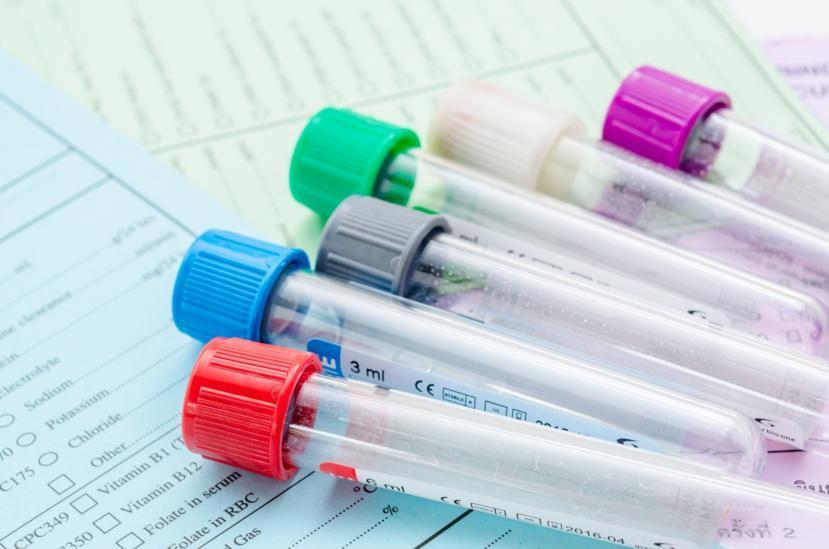Promising Results for Hodgkin Patients Using This Therapy

Researcher Dr. Bradford S. Hoppe and his colleagues at the University of Florida College of Medicine have recently found that the addition of proton therapy to first-line chemotherapy regimens may improve outcomes for patients with Hodgkin lymphoma.
Lymphoma is classically treated with both chemotherapy and radiation
For Hodgkin patients, traditional treatment entails the use of a four-drug chemotherapy cocktail regimen followed by radiation therapy. A problem that arises with the radiation therapy is that damage to neighboring tissues can sometimes be unavoidable. This is especially difficult in Hodgkin disease because the tumors tend to congregate near vital organs such as the heart, lungs, or esophagus. The inconvenient location of these tumors makes it hard to effectively irradiate cancer without causing damage to important organs close by.
New radiation that might improve radiation therapies for Hodgkin patients
Proton therapy is a newer type of radiation treatment that can target lymphoma tumors even if they are in difficult to reach places. It works from a machine that speeds up small, positively charged particles known as protons. The faster these protons, the higher the energy achieved. High-energy protons can travel deep into body tissues compared to low-energy ones.
At high energy, these protons are able to kill cancerous cells. Compared to traditional radiation treatment, proton therapy is able to deliver higher doses of radiation to cancerous areas with less damage to the surrounding normal tissues. Because of this, proton therapy can be especially useful for treating patients who have Hodgkin tumors in their chest. The highly specific beam of destruction is better at killing off the cancer cells while sparing the healthy organs nearby. This results in the safer treatment of the lymphoma as well as fewer side effects experienced by the patients. For some, proton therapy may represent the last hope for a cure, especially if their tumors are in difficult to reach areas or are obscured by vital organs.
The challenges of using proton therapy widely
So now we know there's a technology out there that can zap cancer cells without giving you as many side effects. Why aren't all doctors grabbing all their patients and rushing over to this amazing machine? Well, it turns out it's not all that simple. There are some barriers to using proton therapy widely in clinical practice. One reason is that this new treatment is more expensive, making it less accessible. Not all doctor's offices can have the means to buy the technology, and neither can all hospitals. Another reason is that because this treatment is relatively new, we still need to determine how effective it is at actually doing the job it's intended for.
Doctors want solid evidence that when they send their patients to get proton therapy instead of regular radiation, their patients will see just as effective treatment response as the latter. This calls for research and future clinical trials to determine just how this new technology stands up to the old. Though in theory, the machine sounds like a no-brainer winning situation, we need proof to know that we can truly rely on it to treat the masses. This helps keep patients from being potentially harmed or withheld from potentially life-saving treatment. We don't want to replace the old therapy until we know that the new one is just as good at curing their cancer. Currently, there are some concerns that using proton therapy instead of traditional radiation might actually result in a higher risk for relapse.
Proton therapy vs traditional radiation
So proton therapy almost sounds too good to be true. But researchers hope that they can make its benefits a reality. That's why they decided to study the treatment's efficacy using a prospective clinical study.
From June 2008 until August 2015, Dr. Hoppe and his colleagues at the University of Florida College of Medicine enrolled patients who were diagnosed with Hodgkin Lymphoma. These patients were all treated with the traditional chemotherapy regimen of 4 drugs, followed by consolidative proton therapy.
The group then studied the clinical outcomes of these patients after they received their proton therapy treatments. At each weekly follow-up visit during their treatments, patients were evaluated for any signs of radiation side effects or progression of cancer. Patients were followed for a median time of 32 months.
Encouraging evidence was found
The researchers found promising evidence for benefit using proton therapy. In their study, 96% of the adult patients enrolled in this study remained relapse-free at their 3-year follow-up. In pediatric patients, the positive effect was slightly lower at 87%. They found that most of the patients in their study who received proton therapy were younger, female patients who had bulky tumors in their chests. These happened to also be the exact demographic for lymphoma patients at highest risk of developing radiation toxicities from traditional therapies. Overall, only 10 recurrences were reported, and no grade 3 toxicities were observed during the follow-up period.
The researchers concluded that proton therapy may be a well-tolerated and effective treatment for Hodgkin patients, especially patients who were at the highest risk for toxicity reactions to traditional radiation. They feel that their data supports the use of this treatment as long as patients are followed closely long-term. To do this, they recommend only performing the proton therapy on patients who are part of a registry setting. This way, any unexpected toxicities that arise can be recognized quickly and managed appropriately.
What's it like to get proton therapy?
To receive proton therapy, you're brought to a specialized treatment room. Here, the staff will set you up on a treatment table and may use an immobilizer to make sure you don't move during the procedure. This ensures that the machine can work accurately. After you are in position, the staff will align the machine's lasers, aiming the direction of radiation at the predetermined treatment area. To confirm, you'll usually have another imaging test done prior to receiving the dose.
Time for the treatment itself. The staff leave the room and communicate with you via videos and audio feed. They are controlling the proton therapy machine from a room just outside the treatment room.
Once it's initiated, the treatment takes approximately 15-30 minutes to complete. Radiation is applied using a machine that painlessly emits high-energy protons through the patient's skin, targeting deep tissues within the body. The radiation is given each day, five days per week for a 4-7 weeklong treatment course. Patients generally feel good enough to go about their normal days after receiving the treatment. This is a significant advantage for lymphoma patients because many of them can continue working at their jobs and exercising regularly. The side effects appear to be minimal compared to traditional radiation therapy.
You can read more about Dr. Hoppe's work at the online journal, Annals of Oncology.
References












